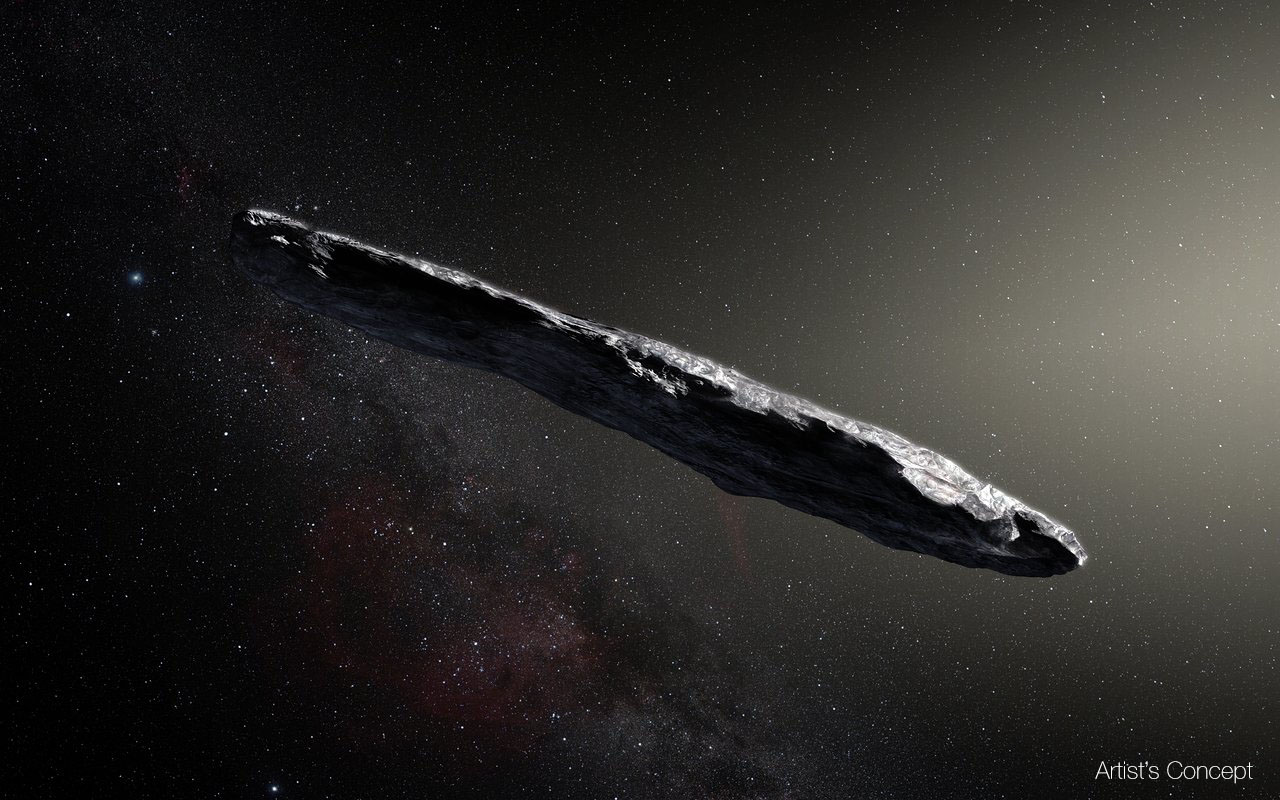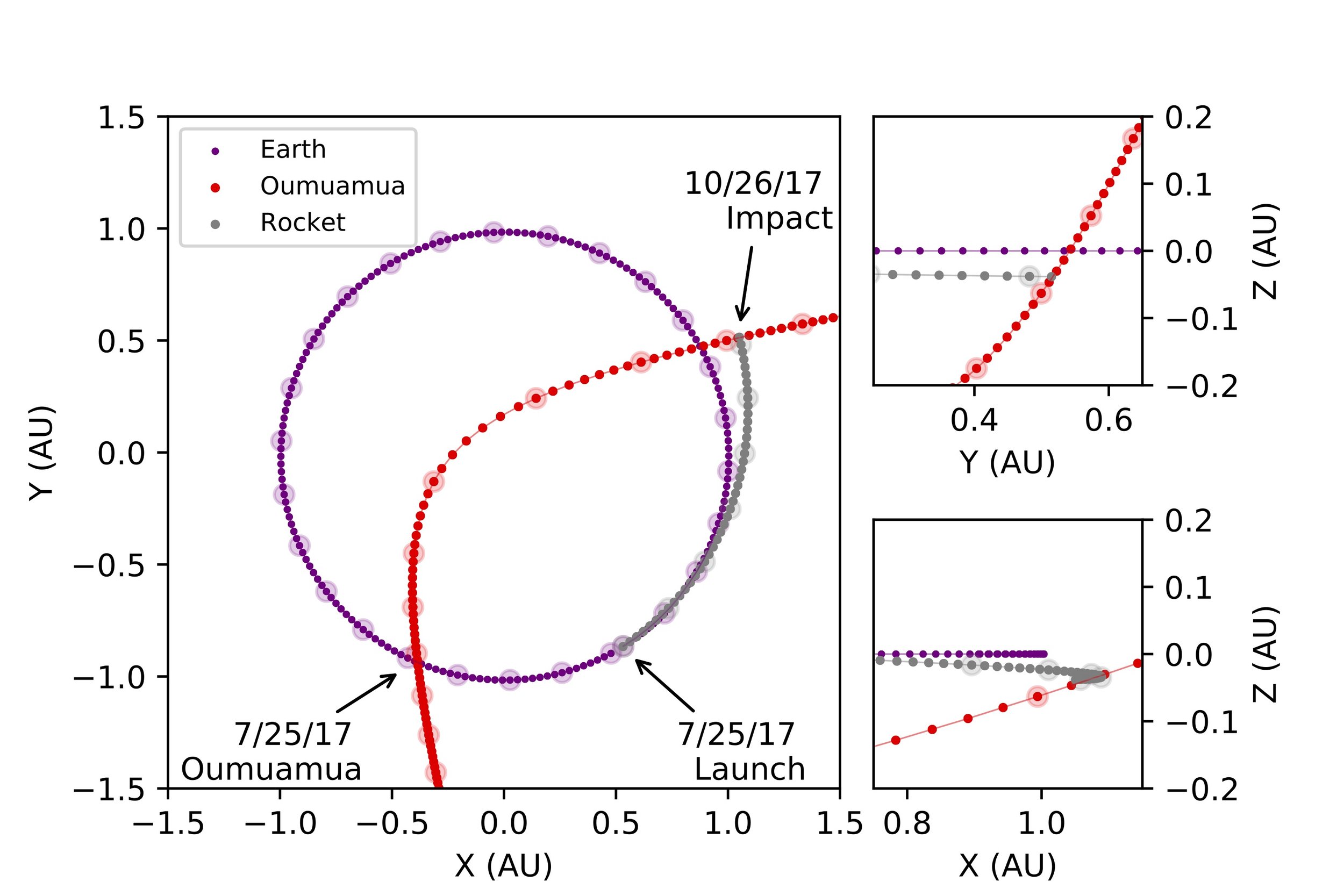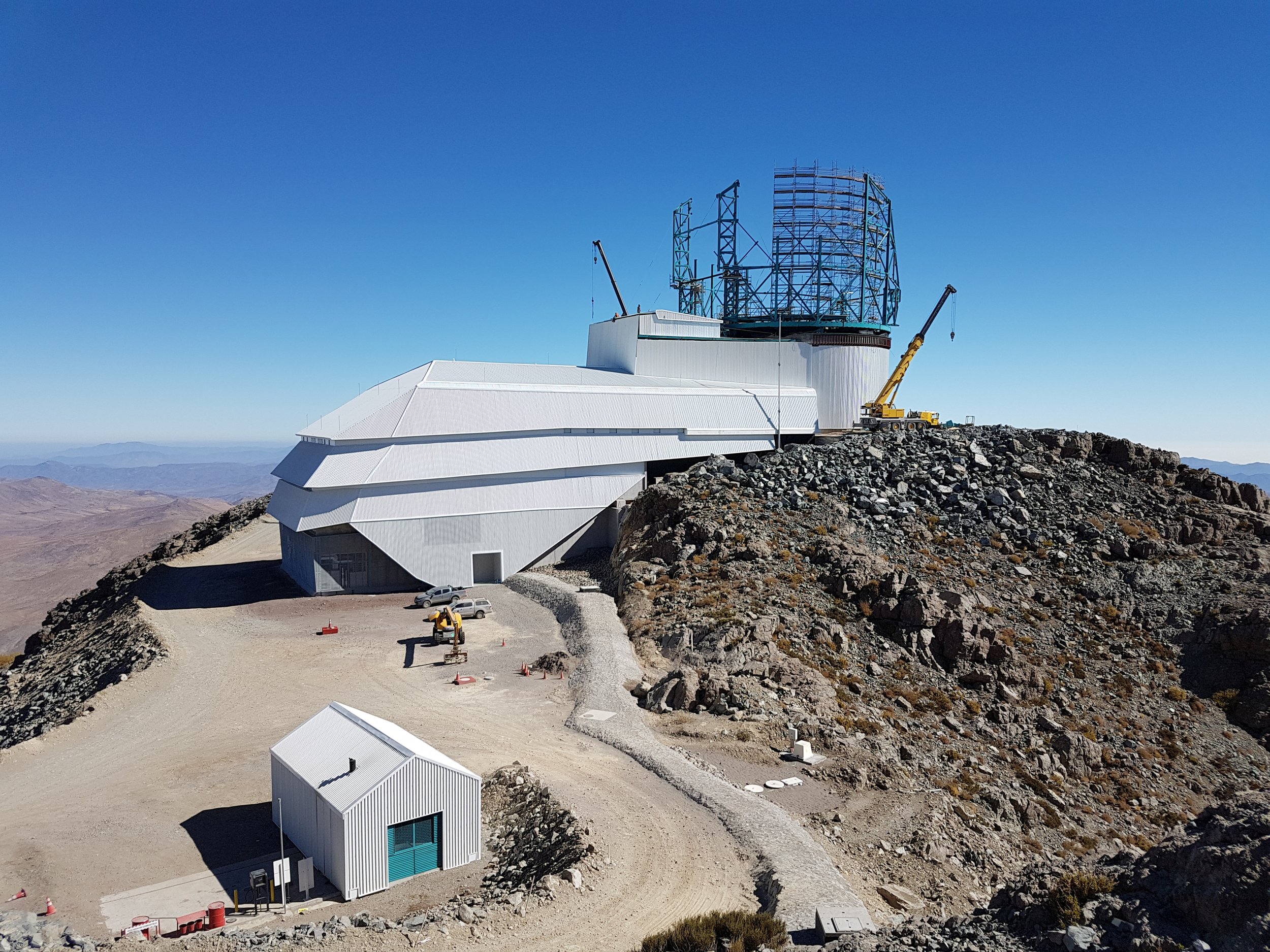
Figure 1: Schematic of the Adopted Jet Model
‘Oumuamua is the first interstellar object detected passing through the Solar System, and it has left a number of mysteries in its wake. We know it came from the depths of interstellar space because its orbit was notably hyperbolic, shaped like a flattened U instead of the elongated loops that comets usually follow.
Solar System comets and asteroids were the building blocks of our own planets, and they have told us much about how our planets formed. ‘Oumuamua presents us with the first up-close glimpse of raw material from an alien system of planets. Although it is long gone now, out past Jupiter, it continues to fascinate.
‘Oumuamua’s path through the inner Solar System cannot be described by just the Sun’s gravitational influence. It must have experienced an additional, non-gravitational acceleration. Astronomers have speculated over the source of this acceleration, with theories ranging from explosive break-up to solar radiation pressure on a membrane-thin interstellar probe. A more mundane explanation, however, is that the acceleration was generated by a nozzle-like venting of sun-warmed gas.
Video 1: Constant Jet Model
We observe Solar System comets outgassing regularly. As a comet approaches the Sun and heats up, its volatile ice sublimates and erupts in an outflow, or “jet”. The beautiful cometary tails we observe are due to small dust particles trapped in the outflow that reflect sunlight.
Remarkably, ‘Oumuamua displayed zero evidence of a cometary tail. Even more confounding, an ordinary comet-like jet would also rapidly spin ‘Oumuamua up, yet when it was monitored with telescopes, it changed from bright to dim on a fairly regular 4-hour schedule.
In Video 1, the nozzle-like gas vent, which is shown as a blue line, erupts at a single point on ‘Oumuamua’s surface. This type of jet would very quickly cause the body to spin up, and therefore cannot be an accurate representation of what occurred.
Video 2: 2-dimensional Pendulum Model
In the model that we are proposing for ‘Oumuamua, the venting gas does not erupt from a single fixed point on the surface. Instead, the jets are envisioned to migrate along the surface, following the warmth, and tracking the direction to the Sun.
Video 2 shows an idealized two-dimensional case, where the jet always erupts at the point where the Sun is instantaneously directly overhead. In this situation, ‘Oumuamua rocks back and forth like a pendulum instead of spinning up. This behavior can be described, mathematically, with an equation that is quite similar to the equation which describes a simple pendulum (see Seligman, Laughlin & Batygin, 2019, Submitted for the full derivation).
In the full three-dimensional case, ‘Oumuamua manages to tumble, but it never spins up significantly. Videos 3-4 below show samples of the full tumbling dynamics. For ‘Oumuamua to cycle its brightness consistently every four hours as was observed, it must be about 250 meters long.
Video 3: 3-Dimensional Migrating Jet Varying Albedo
Video 4: 3-Dimensional Migrating Jet Constant Albedo
Figure 2: Skymap
‘Oumuamua’s serendipitous discovery hints at a vast unseen population of similar interstellar wandered. Since it was very dim and difficult to detect, its discovery suggests that every star in the galaxy ejects many such objects throughout the planet formation process. Simply stated, many more of these objects will be coming. Figure 2 shows a sky map of where we are most likely to see the next ‘Oumuamua-like objects.
If we had been ready for ‘Oumuamua, it would have been remarkably easy to do an in-situ observation. The image below displays the trajectory of the minimum energy interception mission. The trajectories for `Oumuamua, the Earth, and the rocket are plotted in red, blue and grey respectively. The arrows indicate the positions in space of `Oumuamua and the rocket on the launch and interception date, 7/25/2017 and 10/16/2016. For a 3-D manipulable plot of the optimal interception mission, click here.
Figure 3: Minimum Energy Interception Schematic
Figure 4: Construction of LSST
Figure 5: Feasability of Missions to Future ‘Oumuamua like Objects
When new telescopes like LSST (right) come online, we will detect a handful of these interstellar interlopers every year. The histograms on the right show that it will take about ten years of searching to find an interstellar asteroid for which an interception mission will be feasible.




